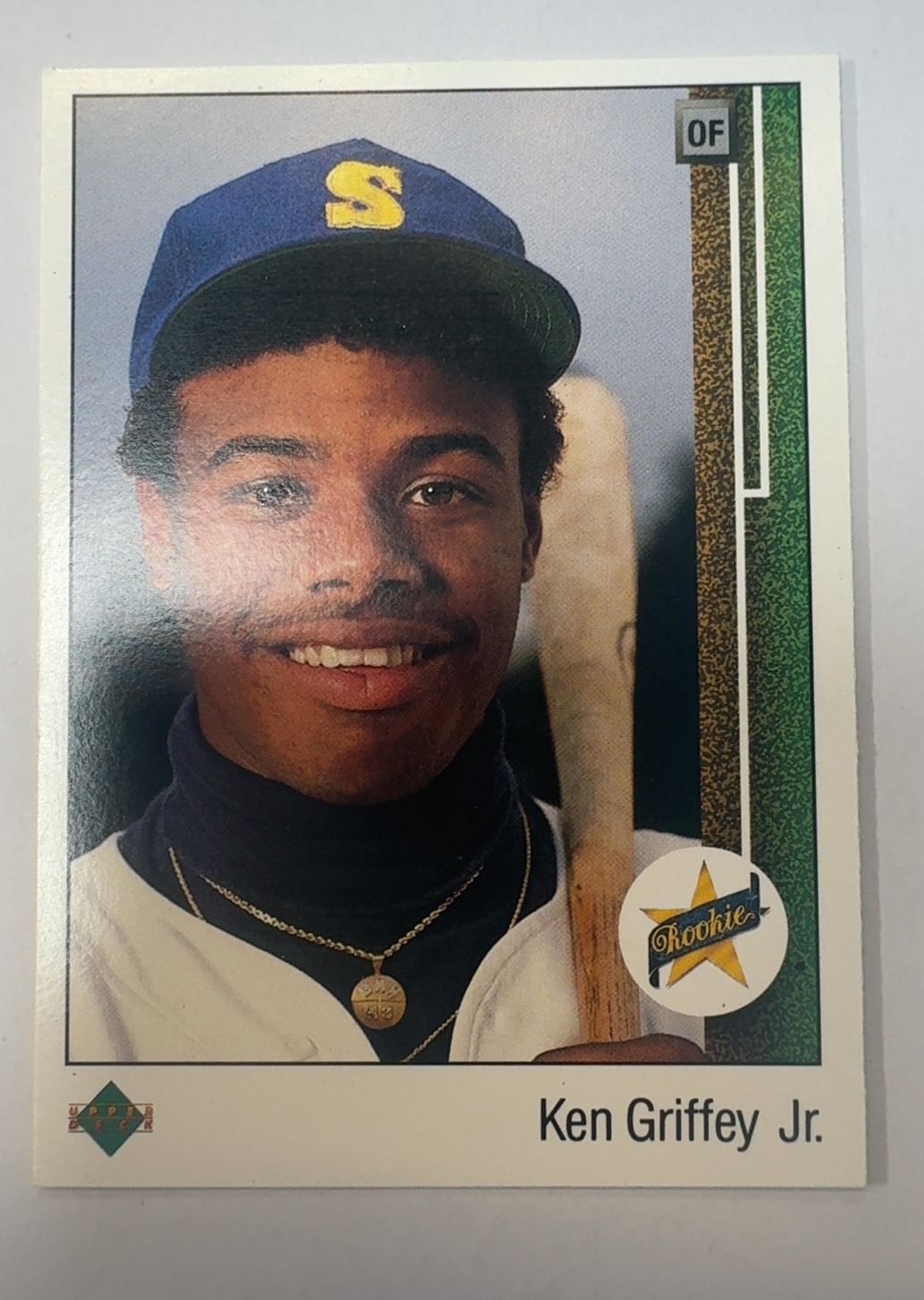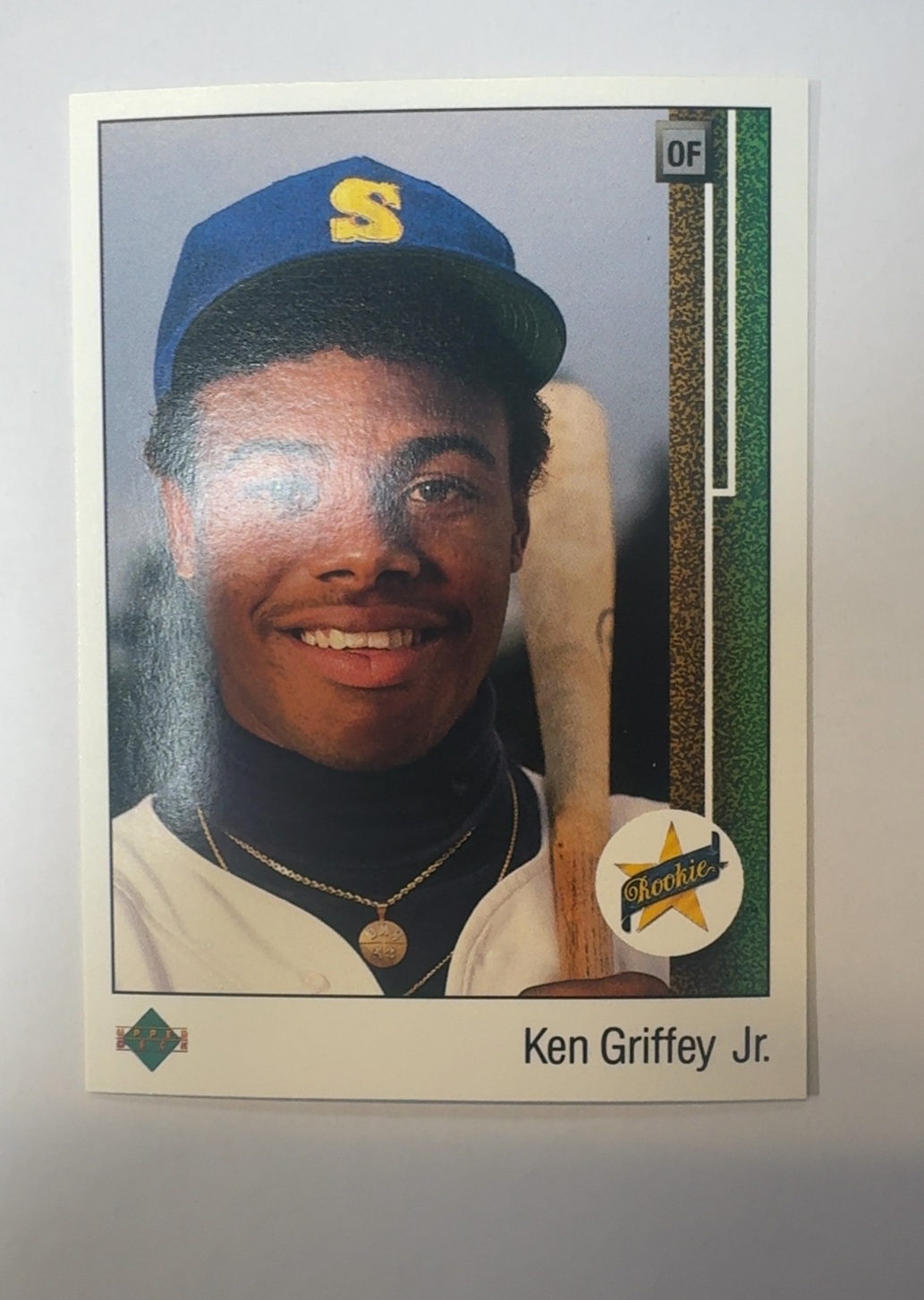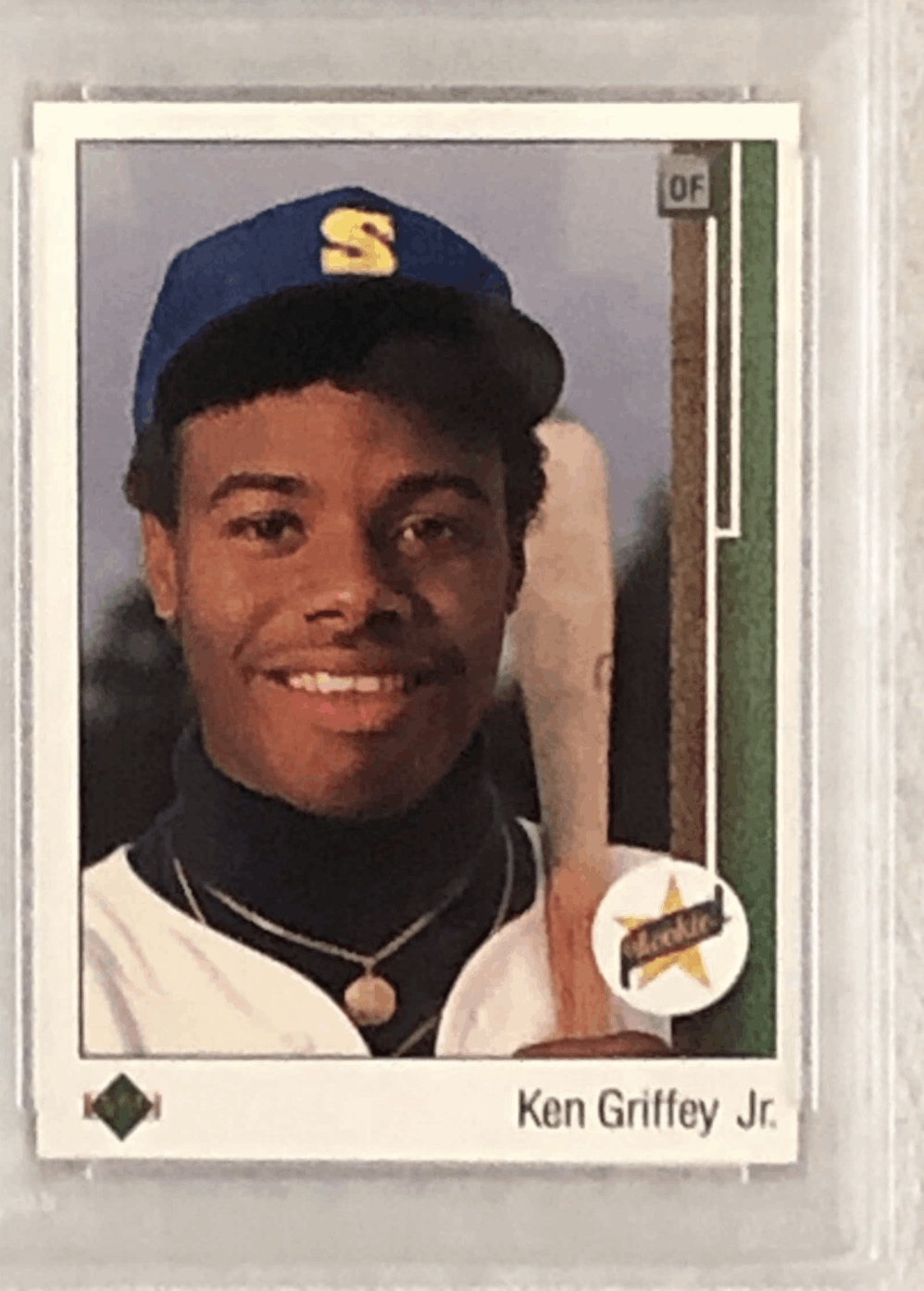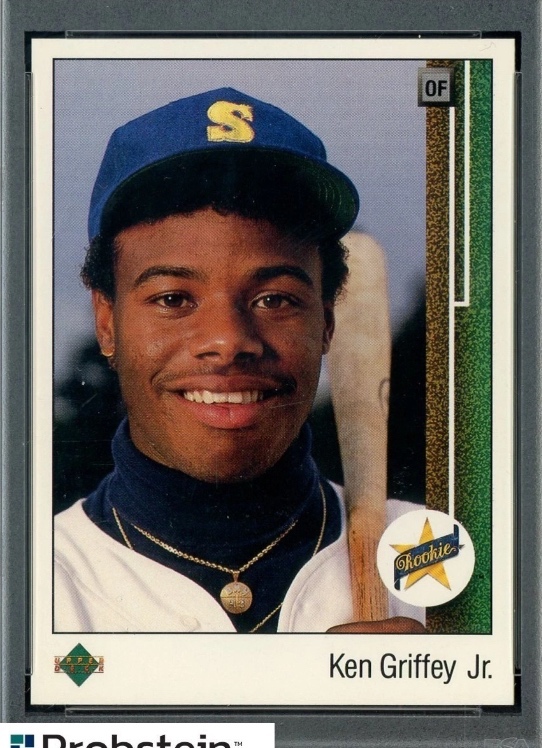1989 Upper Deck’s Ken Griffey Jr. #1: Real Comps, Centering Math, and AI-Backed ROI
1989 Upper Deck changed the hobby—and Ken Griffey Jr. #1 still proves it
Upper Deck’s 1989 baseball release ushered in premium photography, white-stock card backs, and a new standard for quality control. Three decades later, the set’s flagship chase remains the Ken Griffey Jr. Star Rookie (#1)—the most instantly recognizable modern baseball card and one of the hobby’s most graded assets. Today, prices for this card still swing sharply based on centering and overall eye appeal, making it a perfect case study for data-driven collecting and grading strategy.


What actually sells: filtering the market noise
Raw search results can be messy—mixing autos, reprints, insert tributes, and hype terms like “potential PSA 10.” To get a true read, we filtered for only the base 1989 Upper Deck #1 Ken Griffey Jr. (no autos, no 2002 Heroes tributes, no “error” claims) and looked at closed sales from late July through early August 2025, with a quick check against late spring comps.
- Raw (ungraded): After filtering out mismatches and marketing fluff, most sales cluster around $50–$95, with frequent closes at $56, $60, $65, $75, and a few outliers (as low as $25 for a beater; just over $100 for very strong-looking copies). Median sits roughly in the $60–$75 band.
- PSA 9: Multiple true-PSA-9 sales between $235–$275 (e.g., $232–$255–$275 in recent data).
- PSA 10: Summer 2025 results cluster around $3,900–$4,050. A January sale near $2,400 appears to be a seasonal or auction-specific outlier.
- BGS/CSG tiers: BGS 9 around $150–$160; PSA/CSG 8 to SGC 8.5 typically $70–$100. PSA 7 often $66–$75.
Important: a few PSA 1s cleared suspiciously high due to provenance or listing quirks—those are not representative for pricing low-grade copies.
Centering is king: four AI-graded copies show the spread
We ran four real user-submitted copies through CardGrader.AI to quantify how a few ticks of centering and edge/corner wear move you between price bands—and grading outcomes:
1) Off-center risks (mid-grade value)
The 1989 Upper Deck Ken Griffey Jr. Base we analyzed at an AI grade of 6.91 was flagged as severely off center with scattered corner specking. That profile tends to correlate with raw sales in the $45–$65 range. Graded comps (PSA 5–7) in our filtered set typically landed between $43–$75 during May–August 2025. If you’re holding a copy like this, the market often values centered-eye appeal over minor touch on corners—so unless you expect a 7 with strong centering, grading may not add much net ROI after fees.
2) Solid mid-to-high raw, borderline graded upside
A more balanced copy—1989 Upper Deck Ken Griffey Jr. Base—came back 7.60, marked “slightly off center” with localized corner nicks. In the current market, raw examples of this quality often close $60–$95. If you’re targeting a grade, note that PSA 7s/8s have sold around $66–$100 recently; your upside appears only if you can push a clean 8 at the high end or sneak into 9 territory (where the price jumps to the mid-$200s). That’s where an AI pre-check can save you a grading fee on marginal candidates.
3) Near-mint centering and surfaces (the PSA 9 conversation)
Two stronger AI scans—1989 Upper Deck Ken Griffey Jr. Base at 8.78 and 1989 Upper Deck Ken Griffey Jr. Base at 9.32—both presented as clean-surface examples with only slight centering bias. Those are the copies that routinely command $90–$100 raw and become legitimate PSA 9 candidates. Our filtered PSA 9 sales spanned $235–$275 in late July, which aligns closely with the AI-estimated graded value band on these scans.
- Buy strong raw at ~$95 → PSA 9 exit at ~$245 (midpoint), minus grading/ship/fees ~$30–$40 → ~$110–$120 net spread achievable in optimal execution.
- Risk: if that same card lands an 8, you’re closer to ~$100—essentially a break-even after costs. Pre-screening with AI centering/defect detection improves your odds.
How to spot value in 1989 Upper Deck Griffey #1
- Centering first: Seasoned buyers prefer centered examples—even with tiny corner specks—over sharp corners on an off-center copy. The difference can be the entire jump from “nice raw” to PSA 9 money.
- Surface & focus: Look for crisp print, rich color, and clean gloss. Our higher-graded scans noted “excellent surface quality” with no scratches or print defects—exactly what PSA 9s tend to show.
- Edges/corners: Micro-specking isn’t fatal; consistent sharpness is. AI notes like “one minuscule white speck” along an edge are common on pack-fresh cards from this era; multiple nicks cluster toward mid-grade.
- Back hologram and print: Genuine 1989 Upper Deck cards feature sharp, aligned dot patterns and a quality hologram on the back. Counterfeits often show washed-out ink, incorrect screening, or mushy photo detail.
Historical context: why this card keeps commanding attention
1989 Upper Deck wasn’t just another release—it reset expectations for what a baseball card could be. Premium stock, vivid photography, anti-counterfeit elements, and the audacity to lead the checklist with a teenage phenom. The result is a card that remains both a cultural touchstone and a liquid market today. While the set boasts other notable rookies (Randy Johnson, Gary Sheffield, John Smoltz, Craig Biggio), Griffey’s #1 is the set’s blue‑chip anchor—and the one most sensitive to centering and grading outcomes.
Data-backed pricing bands (after strict filtering)
- Raw: Typical cluster $50–$95; median around $60–$75.
- PSA 7: ~$66–$75; PSA 8: ~$90–$100.
- PSA 9: ~$235–$275 (recent summer comps).
- PSA 10: ~$3,900–$4,050 in summer 2025 (older low outliers exist but aren’t indicative).
- BGS 9: ~$150–$160; BGS/SGC/CSG 8–8.5: ~$70–$100.
We explicitly excluded autos, reprints, 2002 Upper Deck Heroes tributes, “error” claims, and “potential” grades to avoid skewing the averages.
Turn your box-find into a plan
If your copy looks centered with clean surfaces, you may have a PSA 9 candidate. If centering drifts or corners show consistent whitening, consider selling raw into the $60–$75 lane rather than gambling on grading fees. Want a quick, unbiased read before you submit?
- Curious about your own cards from this set? Scan them with our AI grader to find out.
- Sign up for CardGrader.AI to get free credits and start evaluating your collection.
- Headed to a show? Use CardGrader.AI’s Fast Scan to check values and centering in seconds, right at the table.
Final take
Upper Deck’s debut still sets the pace, and Griffey’s #1 remains the bellwether of late‑80s rookies. In 2025, the price action is rational: centering drives everything, and clean surfaces convert to 9s. Use real comps and AI pre-screening to target your submissions—and let the data, not the hype, guide your next move.

